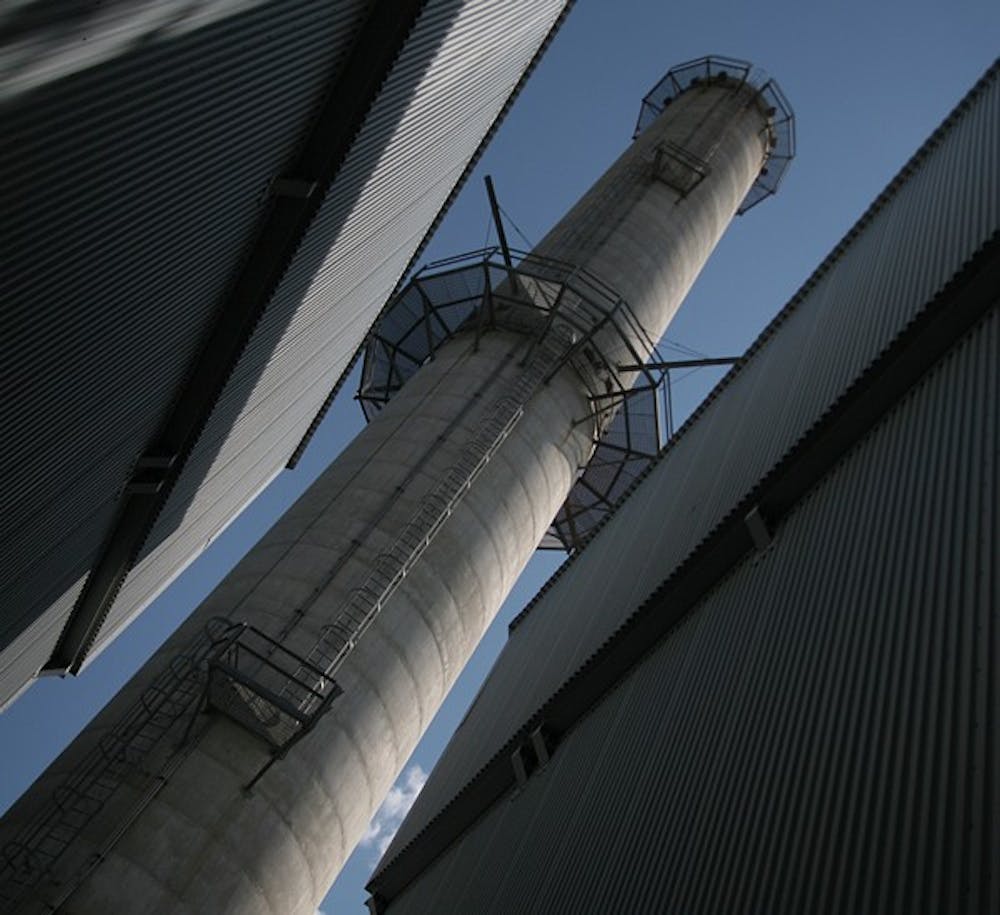As concerns grow about greenhouse gas emissions, universities are pouring resources into maintaining an environmentally friendly image.
But those universities are often the greatest contributors to the problems that they are trying to solve.
In the last 10 years, UNC’s greenhouse gas emissions have increased 40 percent, making it one of the largest contributors to Chapel Hill’s emissions, Daniel Arneman, an environmental analyst for the university, wrote in an e-mail.
The national average increase was 15 percent between 1990 and 2008, according to the U.S. Department of Energy.
UNC is among the universities across the country working in conjunction with surrounding towns to battle the increasing rates of greenhouse gas emissions.
Town-gown partnerships
According to the UNC carbon inventory compiled in 2008, 90 percent of the on-campus carbon emissions are related to supplying energy to campus buildings, Arneman said.
An increase in the number of campus buildings — especially energy-intensive labs — is causing the jump in emissions, Arneman said.
UNC has implemented a number of small changes to bring down emissions levels.
In addition to altering the buildings’ heating and cooling systems, the department is waging a campaign to get campus workers to be more conscious of energy usage, said Chris Martin Jr., UNC director of energy management.
New building standards are being applied to ensure long-term decreases in emissions.
“With the development agreement at Carolina North, there are standards we’ve set for energy and water consumption and things like that we’re working together with the town on,” said University architect Anna Wu.
The University of Colorado is retrofitting existing buildings and is now building to the environmental standard, but it will take a while before the result is seen, said Matt Appelbaum, a city council member and former mayor in Boulder, home to the University of Colorado at Boulder.
At the end of 2008, Boulder’s greenhouse gas emissions were 27 percent higher than the city’s 1990 levels.
“The university’s the largest business in town,” Appelbaum said.
Transportation
One of the key areas for town-university partnerships is the local transportation system.
A three-way partnership between UNC, Chapel Hill and Carrboro allows the bus system to be free, said Town of Chapel Hill Sustainability Officer John Richardson. Making buses free and efficient reduces the incentive to drive to the University.
University of Colorado students and faculty are able to use their bus system for free with a pass that is paid for by student fees.
“It gets the cars off the street,” Appelbaum said, citing 8,000 to 12,000 employees who would otherwise drive to work.
Barriers to green goals
But town and university efforts to be more environmentally friendly can be frustrated by things that they say are beyond their control.
They are constrained by their energy providers, which limit the changes they can make to their energy intake and output.
Ann Arbor, Mich., previously collaborated with the University of Michigan but no longer factors in the university facilities’ emissions when compiling greenhouse gas emissions data for the region, said Andrew Brix, energy programs manager of Ann Arbor, Mich.
Often towns and universities only have one choice for a utility company, and they can’t dictate where the company gets its energy.
“We’re still held hostage. The investment on the utility grid factor makes local action very challenging,” said Jonathan Koehn, regional sustainability coordinator for the City of Boulder.
“Our supply is currently coming from coal. We have very limited control, very limited ability to procure power from anywhere else,” Koehn said.
Contact the State & National Editor at stntdesk@unc.edu.
UNC to work with town to lower energy usage
Constraints limit ability to change

The cogeneration facility located on Cameron Avenue produces steam and electricity for UNC by burning coal.DTH File/Lauren Mccay


